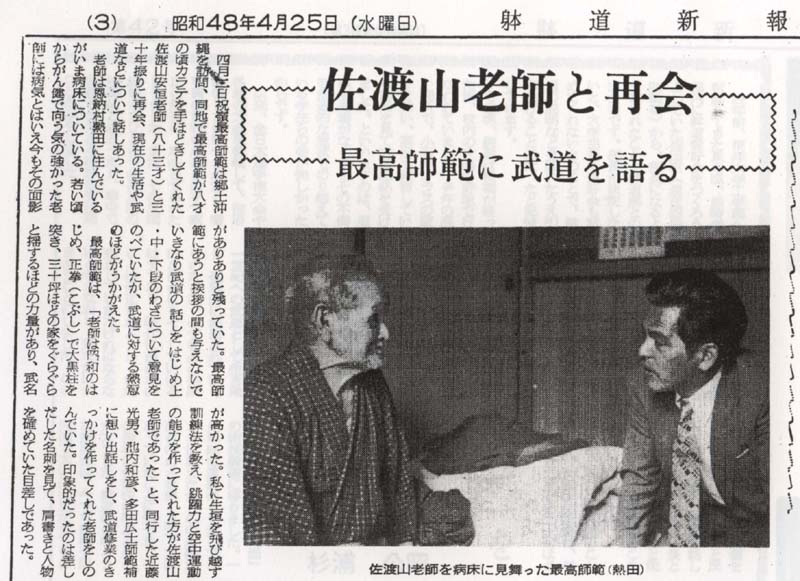Reunion with Saikoshihan and the old master Anko Sadoyama to talk about budo
The 3rd of April 1973, Shukumine Saiko-shihan returned to his Homeland, Okinawa, and met the old master Anko Sadoyama (83 years old) who taught him karate when he was 8. They had not met in 30 years and thus could talk about their lives and budo.
The old master usually lives at Atsuda in Onnason village, but now is in hospital, ill. Particularly strong in his young age, his strength still remains, and Saikoshihan just had time to introduce himself before the old master started talking about budo and the different ranges of techniques, showing that his passion for martial arts was still burning. According to Saikoshihan, the old master, reputed in martial arts, was able to make all of his 100-square-meter house shake just by punching the main pillar. He was also the one who taught Saikoshihan how to develop his jumping abilities by jumping every day over a Hibiscus hedge. This way, Mitsuo Kondo, Kazuhiko Ikeuchi and Hiroshi Tada, who where travelling with Saikoshihan, got to know the master that led their companion to budo. A strong moment for them was when the old man’s eyes lit up, reading Saikoshihan’s visiting card and seeing the face of the man standing in front of him.


 Likes:
Likes: 
 Reply With Quote
Reply With Quote



